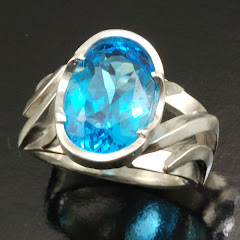The diamond has only recently become the standard engagement ring
Diamonds, though expensive today, were especially expensive prior to the late 19th century, when they discovered large diamond deposits in Africa. Coincidentally, this large diamond discovery happened during the industrial revolution in the United States. This combination of increased size of the middle class and an increase in supply prompted the rise in popularity of diamonds as engagement rings that continues today. In the United States, 80% of engagement rings are set with a diamond.
Throughout much of history, engagement rings were simple bands made out of the best material the couple could afford. This could be many different metals or even found objects in nature. During the pioneer days when puritans were settling the country the common engagement ring was a thimble. This would be worn until after the wedding when the top would be cut off to form a ring. Let me know if you find a woman that would be happy with a thimble.
It's a beautiful gift if you can afford one, but by all means refrain from going into debt for it. Early in the 20th century the largest diamond company, DeBeers, marketed the 2-3 months salary idea as the “proper” amount you should spend. How long will it take you to save that amount? Say you make 30,000, that's 5,000-7,500 for a ring. That amount will get you a very big diamond, way more than most people have. In fact, as of 2007, the average spent on an engagement ring was $2100, far more reasonable. For that price you can get a very nice ring in a solidly made setting. Remember this is a token of your love, not some way to keep up with your neighbors. Yet somehow that DeBeers benchmark has stuck, making most of the grooms feel guilty for staying with their means. For something really special, buy a diamond with what you can afford(say 1 months earnings) and use a local bench jeweler for a quality custom setting. Practicality and prudence are valuable too, and I'm sure she'll appreciate those qualities in her future husband.






No comments:
Post a Comment